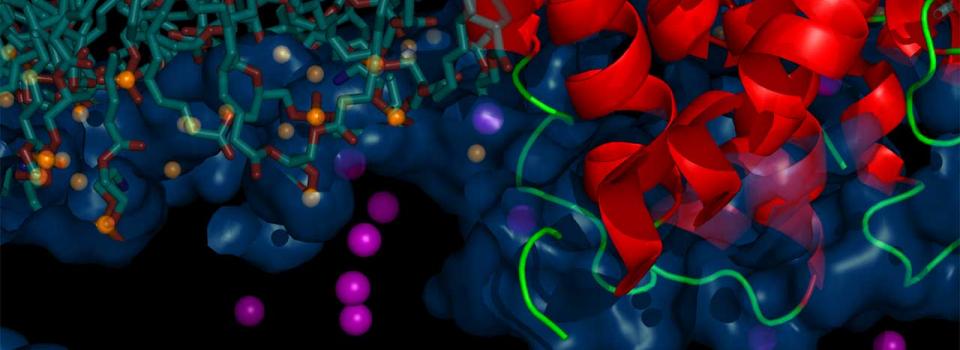
The seminar is sponsored by NYU-ECNU Center for Computational Chemistry at NYU Shanghai
Abstract:
In this talk I address the solvation structure of the simplest quantum solute: an excess electron embedded in liquid water. Although the basic picture had long been assumed to be an electron localized within a solvent cavity, in a manner similar to halide solvation, new results point to the importance of electron correlation in stabilizing an excess electron in the immediate vicinity of water molecules. Indeed, our previous work [Science 329, 65 (2010)] suggested that the hydrated electron, e−(aq), promotes a region of enhanced water density with little or no discernable cavity. This leaves open the question of the relative stability of different e−(aq) solvation motifs and how they might be distinguished by experiment. To address these issues we have developed a new umbrella sampling method for quantum particles like e−(aq). This allows for the direct calculation of free energy differences between simulated cavity and non-cavity structures of different models of e−(aq), and also provides a means to examine its behavior at the air/water interface. Our results point to a revised picture of e−(aq) that encompasses both cavity and non-cavity behavior, and provides new insight into apparently conflicting experimental observations.
Biography:
Prof. Glover received his Masters in Chemistry (2003) from Oxford University and Ph.D. (2009) in Physical Chemistry from UCLA. He did postdoctoral training at UCLA and Stanford. In 2015 he joined the faculty of NYU Shanghai as assistant professor of Chemistry. His current interests are in developing and applying computational chemistry tools to glean an atomistic description of energy transfer and light-initiated chemistry in aggregates of electronically coupled molecules in complex environments. Particular systems of interest are the light-harvesting complex in bacterial photosynthesis, and DNA damage by ionizing radiation. To tackle the inherent complexity of these systems he employs state-of-the-art graphical processing unit (GPU)-based computational chemistry and multi-physics modeling.


